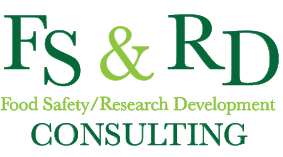Dry Cured Sausages - How do we ensure they are safe and "meat regulations?
There are several important ingredients and processing parameters that are required to make dry cured sausages. The Canadian Food Inspection Agency (CFIA) regulates the processing of dry cured sausages as outlined in the CFIA Manual of procedures Chapter 4.16.1 Control Program Requirements for Fermented Meat Products. Additionally information can be obtained in Annex A: Curing – Approved Curing Methods to Ensure the Destruction of Trichenella in Sausages and Other Meat Products Containing Striated Pork Muscle Tissues. These regulations prescribe several requirements that ensure fermented dry cured sausages are safe for human consumption. These include:
Starter culture requirement
Nitrates- nitrites requirement
Salt level
Water activity (sometimes in conjunction with pH)
Fermentation degree hours
Drying days
Although these requirements are rigid and must be followed, there is still flexibility within individual product development processes. The ability to alter variables in order to differentiate your product from others is still an option. You can vary the salt level, casing size, spices, starter culture, and use different fermentation and drying processes in order to distinguish your finished product from others. During the blending process there are rules that must be followed:
Starter cultures must be maintained at <4 C and a pH <5.3 in order to prevent microbial growth. Growth or transmission to the inoculum. If pH ends up >5.3 the inoculum would need to be tested at minimum for Staph. Aureus.
To ensure that the product meets the curing process it requires that the mix contains salt together with at least 100 parts per million (ppm) and not more than 200 ppm of sodium nitrite, potassium nitrite, sodium nitrate or potassium nitrate or any combination, used during the preparation. These nitrite or nitrate salts or both, along with salt help to preserve the product by slowing down microbial growth.
Salt levels need to be at a minimum of 2.5 % in order to make the product shelf stable. Less salt can be used but it will impact your total number of dryng days. Drying days are determined by casing size, salt level and fermentation process.
Water activity: reducing the water activity (aw) through the addition of salts, sugars, etc. helps to restrict the growth of pathogens. By lowering pH to below .85 all of the following can be controlled:
Clostridium botulinum, Clostridium perfringens, Enterobacteriaceae, Pseudomonas, Salmonella and Staph. Aureus.
Trichenella is more resistant and is not destroyed unless the water activity is below .85. pH can sometimes be used in conjunction with water activity to maintain pathogen control, especially if your goal is to obtain a shelf stable claim on the finished product.
Fermentation – time and temperature of fermentation is critical for both the quality and safety of a product. There are a few different choices of time and temperature that can be used, but the end result needs to have the product consistently < 5.3 at the end of the fermentation process. The guidelines for this section can be found in the CFIA Manual at 4.16.2. There are additional guidelines, typically a heat treatment, to control salmonella and e.coli. This additional guideline is required if the manufacturer is handling beef as well as pork in the same facility.
Sausages can be stuffed in many different types of casing, but what is most critical is to ensure that the dry curing process is able to effectively destroy trichenella, a pathogen that was once common in pork. The dry curing process that can be used is dependent on the casing size, salt level and the fermentation procedure that is used. This is detailed in Appendix A.1. Sausages. The minimum of drying days is determined based on a calculation of these three factors.
In order to be considered a "shelf-stable" and not require refrigeration, a fermented meat product must have a minimum of 100 ppm nitrite/nitrate, a minimum of 2.5% of salt, meet degree hours requirements and meet one of the following sets of specific requirements. (Chapter 4.16.3 Excerpt)
The pH of the finished product is of 4.6 or less, regardless to its final aw.
The aw of the finished product is 0.85 or less, regardless of its final pH.
The pH is 5.3 or lower at the end of the fermentation period and the end product has a aw of 0.90 or lower.
Fermented products which do not meet these requirements must be labeled with a refrigeration statement. If you'd like help in understanding or applying these regulations for dry cured sausages please don't hesitate to contact Melissa Stevenson at FS & RD Consulting. www.fsrdconsulting.com
